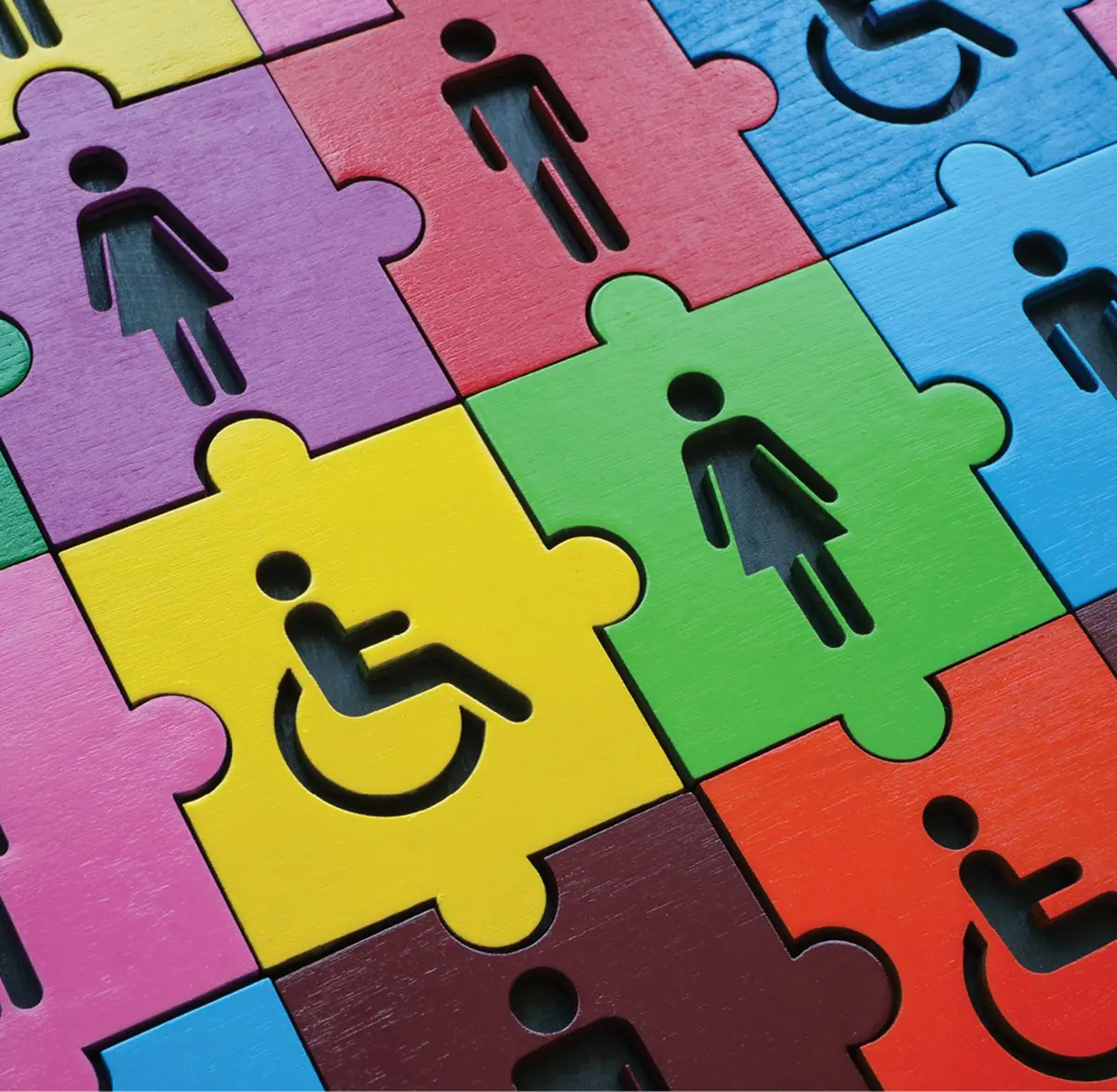DEI+B JOURNEY
Article three in the DEI+B series by the IAPD Diversity Equity and Inclusion Task Force
he manufacturing and distribution industries are facing new challenges. Younger generations are arriving to the workforce expecting that companies align to their personal values, design equitable pathways for professional development and prioritize the elevation of minority voices in a way previous generations have not required. The plastics industry is beginning to experience a boom in establishing things like a supplier diversity strategy, environmental, social and governance (ESG) commitments and mentorship opportunities focused on historically underrepresented groups in leadership roles. Candidates, clients and even financial institutions are beginning to request information on organizations’ diversity, equity, inclusion and belonging (DEI+B) efforts when deciding whether to invest in a company.
It’s not always clear how to effectively roll out DEI+B initiatives in a professional setting. There can be considerable ambiguity and, at times, even some tense reception to the conversation among both employees and external business partners. But successful organizations understand this work is essential to improving their talent brand, delivering on their commitments and cultivating a positive company culture, which is proven to impact the rate at which they attract and retain top talent (Parker, 2023).
So where does a business interested in exploring DEI+B begin the journey?
Start with a sense of respectful curiosity
No one is a subject matter expert on DEI+B. How included or excluded someone feels in any setting is a matter of perspective. Furthermore, even seasoned DEI+B program managers must remain diligent in seeking out the most up-to-date approaches to any area within the field. As our industry grows, we too must grow in our understanding of this work.
As such, entering every conversation with the intention to learn is critical. The perspective of every employee is valuable in DEI+B because each employee brings their own workplace experiences and struggles. From CEO to specialist, whether a champion to the work or still new to it, we all have a part to play in DEI+B and we all have an opportunity to amplify how this work impacts our industry.
Whether it be a company of 400 or 40,000 employees, chances are you have a human resources department. HR is well-positioned to support the design and implementation of a DEI+B strategy. This strategy usually begins with an internal assessment of your current state. If your HR department does not currently maintain a dashboard tracking the demographic data of your organization, this is a great place to start. Keeping a pulse on the race, age and gender makeup of who is interviewing, onboarding and offboarding from your workforce is the first step to improving the diversity of your employee base.

Often companies find one of the challenges in building a DEI+B foundation is competing priorities within the organization and a lack of buy-in. This may be due in part to misconceptions around the who and why of DEI+B. The success of this work is based on employees, managers and leaders understanding the far-reaching implications that better position the organization within the market and positively impact the bottom line.
An important aspect of making DEI+B accessible is exploring with your company the many dimensions of diversity. Employees may feel DEI+B programs and resources do not apply to them, but the opportunity to welcome everyone to this table is the very root of the work. Whether it be an intern or an employee near retirement, we all have dimensions of diversity that are worth celebrating to create an environment conducive to innovation and collaboration.

Having leaders disseminate communications on DEI+B topics is proven to increase engagement. Employees are more likely to connect to the importance of the work when they see their managers and executives invested. This can be as simple as an email from leadership acknowledging a month of cultural significance or commemorating a recent success in the organization’s DEI+B program.
Language is ever evolving, and it can be challenging to keep up with the changes. With this evolution comes the responsibility to stay informed. Endeavoring to be intentional with our words when speaking to our colleagues is a simple but hugely effective way to cultivate a workplace where everyone feels they belong. Exploring resources like the IAPD DEI+B landing page can build a reservoir in which to pull from and, coming soon, the IAPD Glossary of DEI+B terms will be an even more extensive language resource.
Likewise, there are resources on commonly used platforms, like LinkedIn, that specifically focus on how to avoid microaggressions when interacting with coworkers, inclusive business practices and research from respected institutions on how to connect DEI+B to your organization.
There is no one “right way” to go about creating a DEI+B approach for your company. Each organization has unique challenges and opportunities. However, one thing is clear — companies looking to improve their talent brand are incorporating DEI+B into their long-term business strategy.
- Bateman, Alexis, et al. “Why You Need a Supplier-Diversity Program.” Harvard Business Review, 17 Aug. 2020, hbr.org/2020/08/why-you-need-a-supplier-diversity-program.
- Gassam Asare, Janice. “The Key to Diversity and Inclusion Is Mentorship.” Forbes, 27 Sept. 2019, www.forbes.com/sites/janicegassam/2019/09/26/the-key-to-diversity-and-inclusion-is-mentorship/?sh=143bd8177fbd.
- Parker, Rie. “Why Dei Is Important: Nine Benefits of Strong Dei in the Workplace.” Insight Global, 19 May 2023, insightglobal.com/blog/why-dei-is-important/.
- Ricee, Susanne. “All Types of Diversity with Examples.” Diversity for Social Impact, 6 Mar. 2023, diversity.social/workplace-diversity-types/.
- Spławski, Paweł, and Eszter Lukács. “#1 What Is ESG?” Deloitte, 2 Mar. 2022, www2.deloitte.com/ce/en/pages/global-business-services/articles/esg-explained-1-what-is-esg.html.